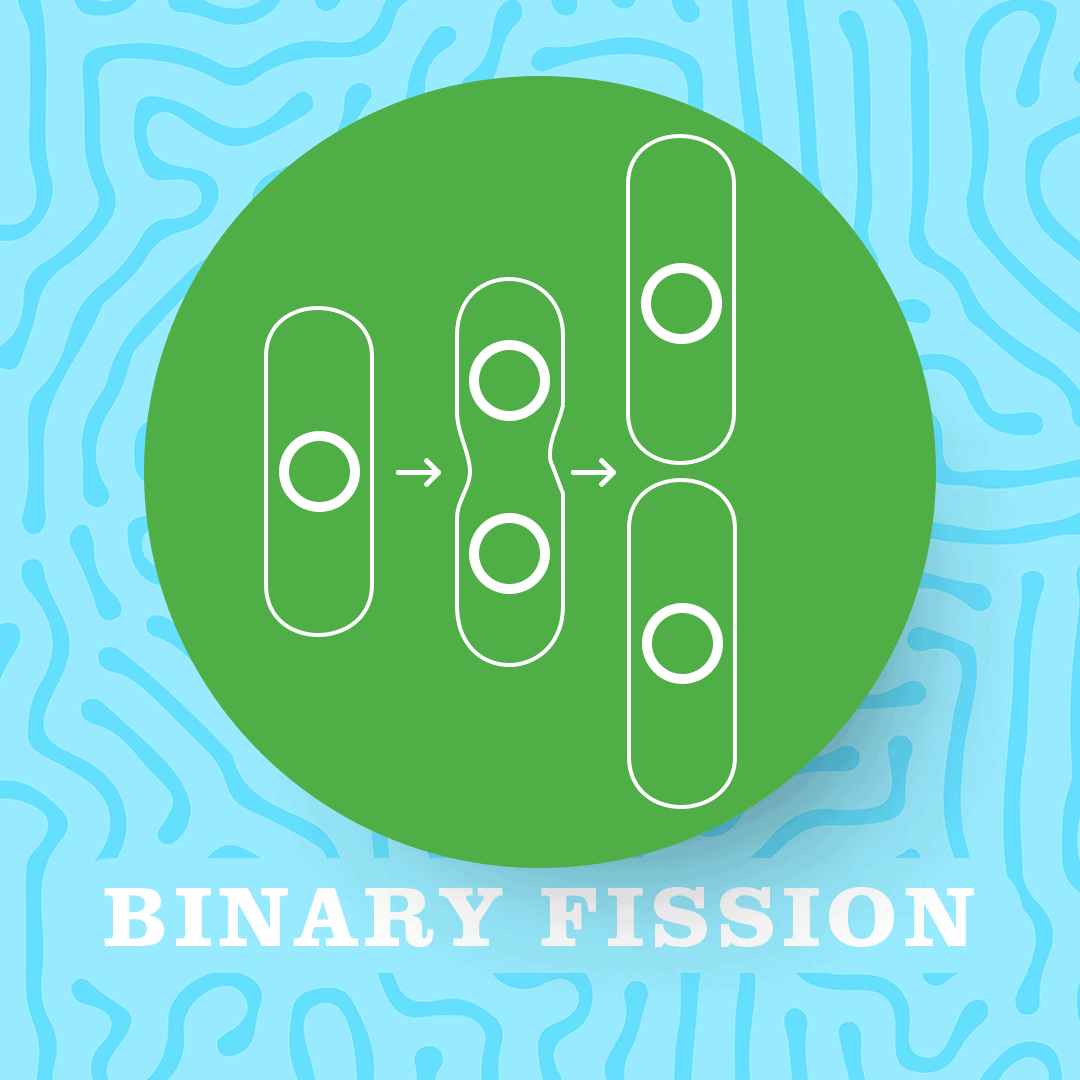
Bacteria grow exponentially. One cell divides into two, these two into four and so forth. This process of splitting into two is known as binary fission. Doing so, cell numbers can increase dramatically within a short timeframe. Microbes, in most cases, are able to reproduce without sexual activity. Nevertheless, the sexual lives of microbes are very versatile. This article explains the key methods of reproduction – we often talk about the impact of the microbiome in our lives, but rarely take a step back to understand how it is such a numerous and diverse ecosystem. Specifically, we have narrowed down to focus on the sexual life of prokaryotes: single-celled organisms that lack a membrane-bound nucleus, i.e. bacteria and archaea.
Why do prokaryotes need sexuality?
In principle, if all cells split via binary fission, they would be genetically identical, because each daughter cell is an exact copy (a clone) of its parent cell.
This way of reproduction is asexual and is typical for prokaryotes. It enables them to conquer an environment very rapidly, such as a piece of soil, a big water puddle, or the blood of an animal or human being.
In ecological terms, prokaryotes follow an r-strategy of the r/K selection theory. r-strategy is characterized by maximizing the reproduction rate (quantity over quality) whereas the opposing K-strategy involves production of few offspring but with greater resource invested in each (quality over quantity). A benefit of asexual reproduction is that you don’t need a compatible partner but instead can just rely solely on your own capacity and the environmental resources available. The search for a partner, in contrast, is time and energy consuming and does not comply with an r-strategy.
This “never-change-a-winning-team” r-strategy works well when the environmental conditions are stable. However, this is hardly anywhere the case. Therefore, prokaryotes also need sexuality from time to time.
From a biological point of view, the main reason for sexuality is the need for genetic recombination. In other words, prokaryotes need to introduce variability into their genetic material so as to adapt to changing environmental conditions.
For example, if the aforementioned puddle dries out, all bacteria will die except, perhaps, the few that possess a high desiccation tolerance. Since the mechanisms used by prokaryotes are different to the ones used by, for instance, plants, animals and humans, where male and female reproductive cells (gametes e.g. egg and sperm) merge, the sexuality of prokaryotes and other microbes is called para-sexuality.
How do prokaryotes transfer genetic information?
There are 4 important mechanisms with which bacteria and archaea get variability into their genetic content: mutation, transformation, conjugation, and transduction. The latter 3 are summarized as “horizontal gene transfer”, because genetic material is exchanged between members of the same generation. (Note: Human reproduction involves “vertical gene transfer” as genetic material is transferred to the next generation).
Mutations are random changes/errors introduced into DNA caused by environmental factors, such as chemicals or high energetic radiation, or by the enzymes that copy the DNA. In most cases, such changes are deadly for the organism or without any consequences. Very seldom, positive traits can arise from such changes, necessitating additional mechanisms to ensure genetic variability. We often hear about mutations in bacteria as a cause for antibiotic resistance, a growing threat to global health. As humans, we have mechanisms which ‘correct’ spontaneous mutations as and when they occur, so we don’t notice most of them that take place. However, mutations are responsible for tumor formation and genetic disorders.
Transformation is the process by which bacteria take up free DNA from their surroundings, e.g. from other dead bacteria, and functionally implement it into their own DNA. This process can benefit bacteria by providing a means to adapt quickly to a changing environment and helps in facilitating the spread of antibiotic resistance.
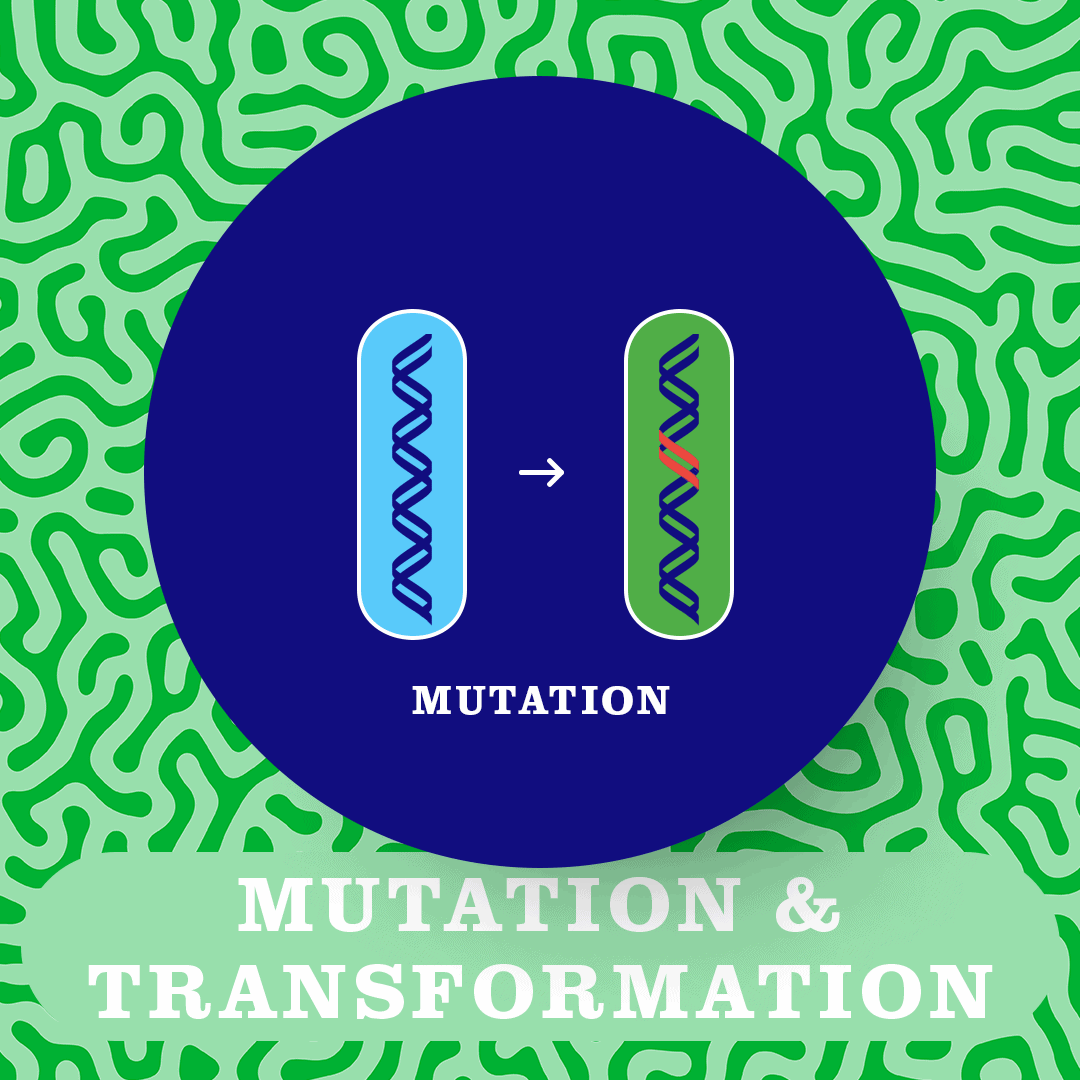
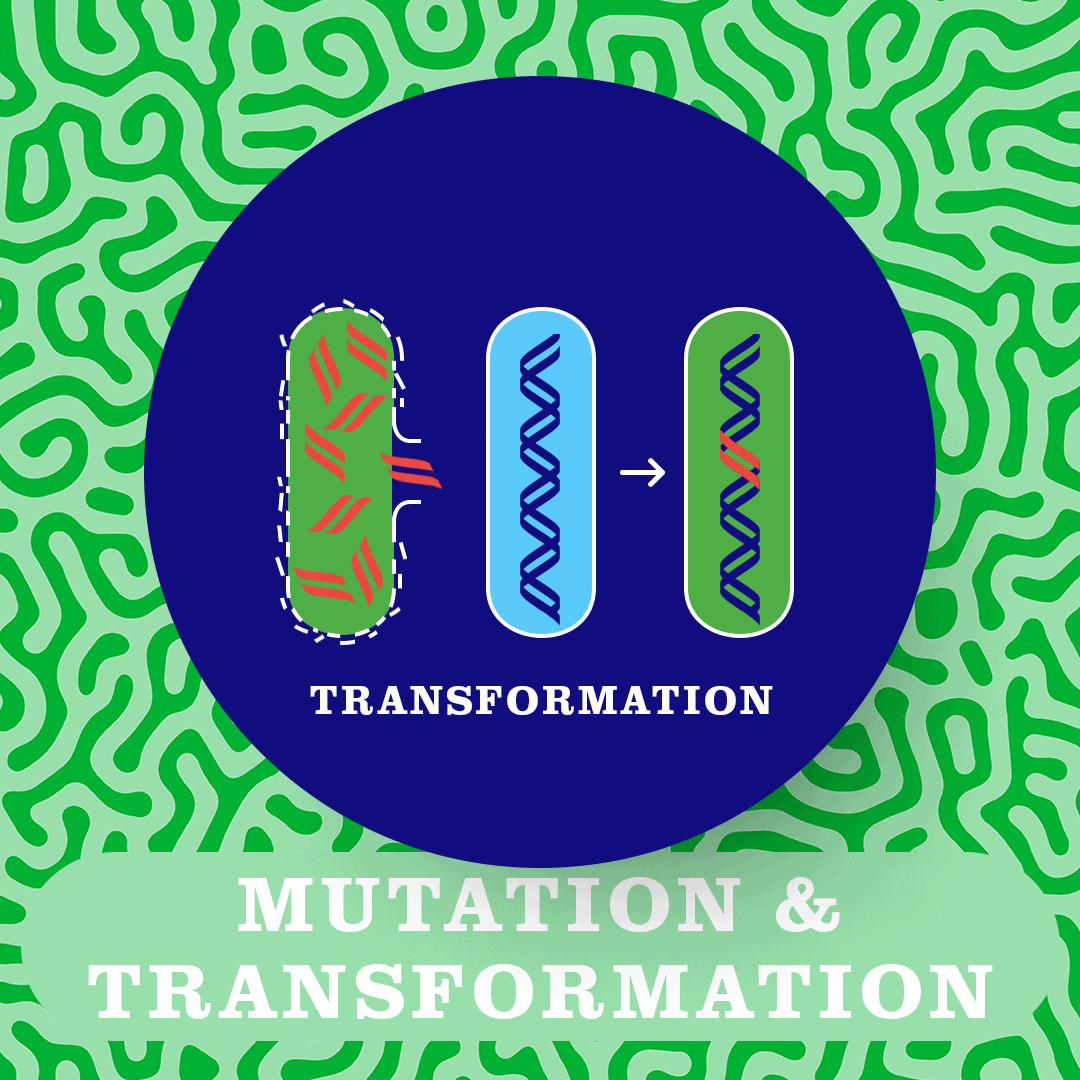
Conjugation is the process by which one bacterium transfers genetic material to another through direct contact and, as such, has some similarities to sexual behavior as we know it. One bacterium is the donor, while the other serves as the recipient.
A bacterial cell that carries the appropriate genes for the process, produces a long, hollow protein tube called F-pilus. This pilus is used to pull another bacterial cell (that does not yet contain the genes needed for conjugation) close by. Then, both cells merge by producing a plasma bridge. Through this bridge, genetic material – usually small rings of DNA called plasmids – is exchanged. Large stretches of the bacterial chromosome can also be exchanged in this way. At the end, both cells possess the genes needed for conjugation. Using conjugation, bacteria can pass through beneficial new traits in a bacterial community, e.g. antibiotic resistance. In this way, a bacterium can become resistant against an antibiotic without ever having had direct contact with it.
Transduction is the name for gene transfer from one bacterium or archaeon to another by means of bacteriophages or archaeophages, i.e. viruses which infect bacteria and archaea, respectively. These so called ‘temperate phages’ do not instantly kill their host bacteria upon infection, but temporarily integrate their DNA into the host DNA. This allows the virus to multiply for a certain time together with its host. After some time, and triggered by certain stimuli, the virus initiates its DNA to be excised from the host genome (complete genetic makeup) again. However, the “scissors” used in this process cut the virus quite generously, so that some host DNA remains attached to the virus DNA. This host DNA now forms part of the virus DNA and will be transferred to the next host bacterium or archaeon, after the virus has left the cell. This mechanism was suspected to be responsible for the emergence of a new EHEC (enterohemorrhagic Escherichia coli; a gut bacterium that causes severe diarrhea with sometimes deadly complications) strain that caused the big EHEC outbreak in Germany and central Europe in 2011 [2].
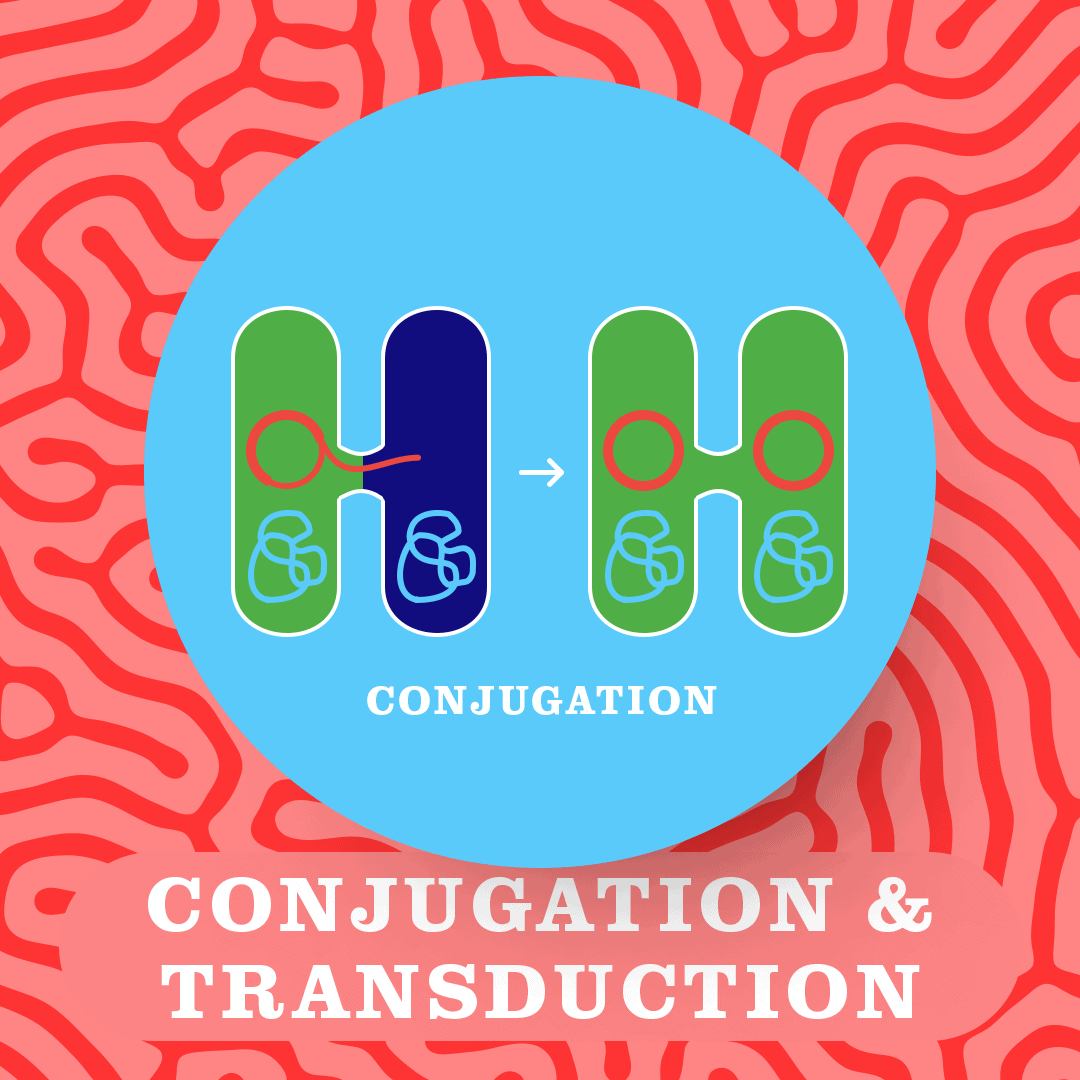
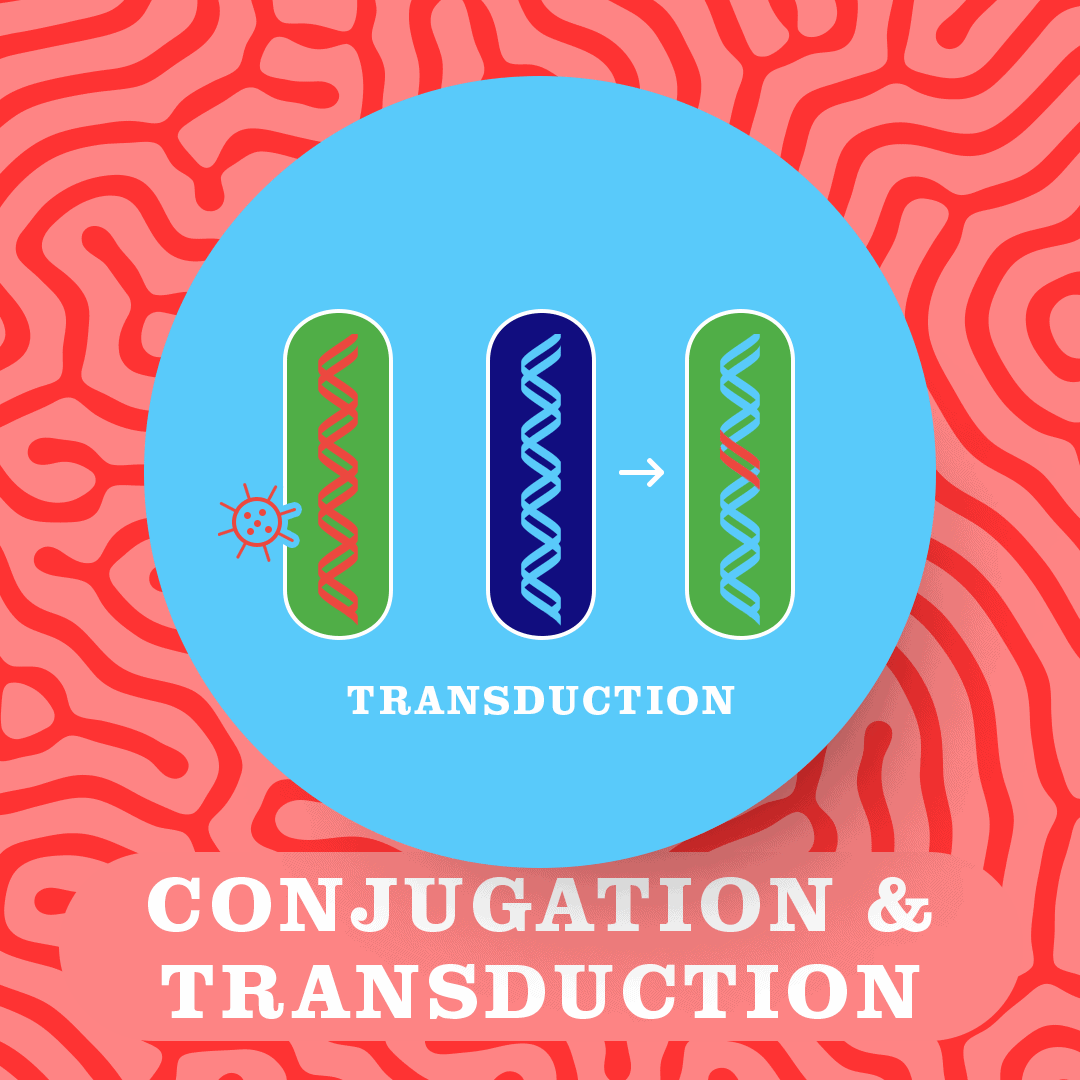
In summary, prokaryotes such as bacteria and archaea, usually reproduce asexually. However, they also employ effective mechanisms to secure genetic variability that guarantees adaptation to an ever-changing environment. In this way, prokaryotes became the genetically most diverse and successful form of life on this planet [1].
To take a deeper dive into the content outlined in this article, further details can be found in most general microbiology textbooks [1].
Explore more microbiome basics in the How it works section of the Content Hub. Check out our Instagram page for even more!
Key References:
[1] Madigan et al. (2018). Brock Biology of Microorganisms, 15th Global Edition, Pearson
[2] Kampmeier et al. (2018). The 2011 German Enterohemorrhagic Escherichia Coli O104:H4 Outbreak-The Danger Is Still Out There. Curr Top Microbiol Immunol. 416:117-148
